When Russia launched its full-scale invasion of Ukraine, Poles began to seriously contemplate that one day, Russia might also turn its sights on them. The country has begun to re-arm. Over the past three years, Poland has outspent all fellow NATO members, spending almost 5% of its GDP on defence. It now has the third largest army in NATO, after the US and Turkey, and plans to double its number of military personnel by 2027.
But despite the impressive amount spent so far, Poland’s armed forces still fall way short of Russia in terms of size, a sore point for Warsaw.
Poland, which joined the EU over 20 years ago, has now raised multiple generations to value peace and human life more than the idea of fighting to protect their country, raising the question of whether Poland could muster its citizens to be ready for war with Russia.
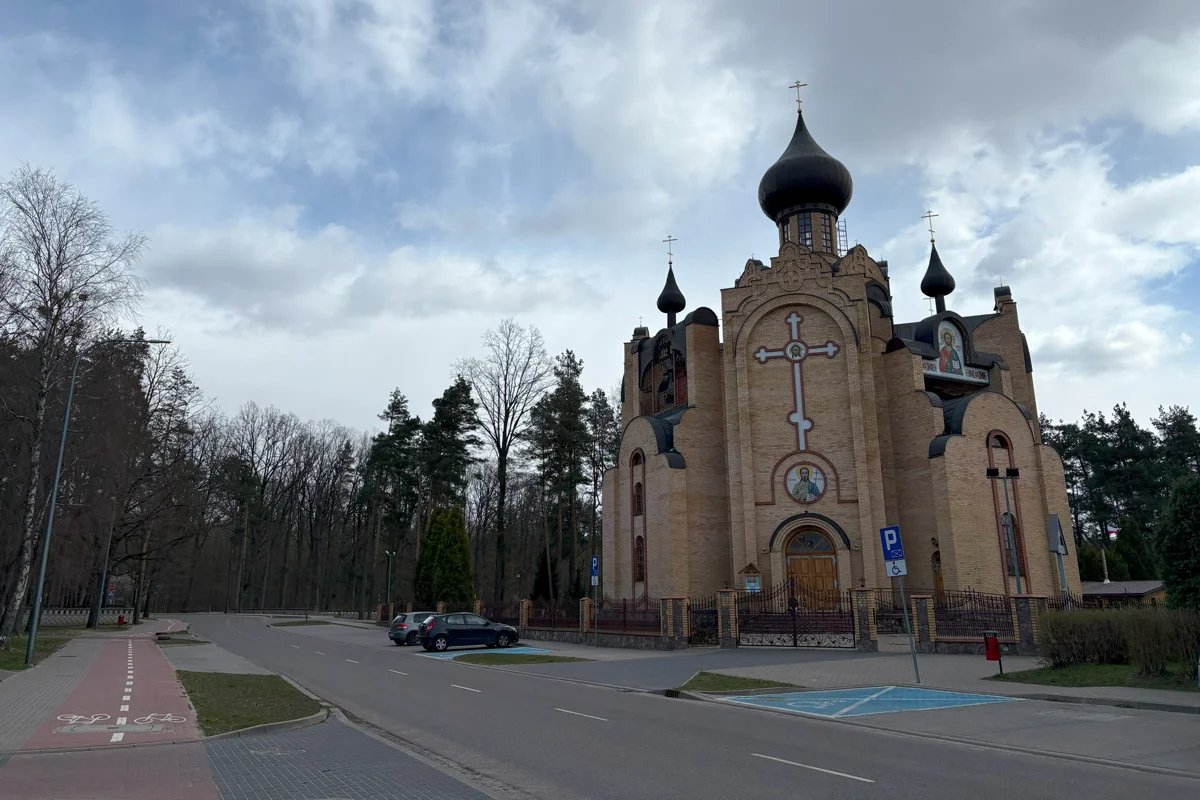
The Church of John the Baptist in Hajnówka, Poland. Photo: Yulia Akhmedova
Eastern front
In the small town of Hajnówka near the Polish-Belarusian border, there is nothing to indicate Poland’s recent large-scale militarisation, so widely discussed by the Polish authorities.
A territorial defence recruitment centre, which was set up in 2017 to train reservists without pulling them out of work, is located right at the entrance to the city administration building. Two bored-looking employees — a man and woman in uniform — sit at a table with military service pamphlets scattered across it, clearly without much to do.
It is difficult to imagine that the “largest military operation since 1945” is unfolding close by in an attempt to strengthen Poland’s eastern border.
Many people in Hajnówka speak Belarusian, Russian, or both mixed with Polish. There is a Belarusian cultural centre and a college where Belarusian is taught as a minority language. The white-red-white flag — a symbol of Belarusian independence widely used during the 2020 anti-regime protests — hangs alongside the Polish flag.
Witnessing the slow pace of life in Hajnówka, where only church bells break the silence, it is difficult to imagine that the “largest military operation since 1945” is unfolding close by in an attempt to strengthen Poland’s eastern border.
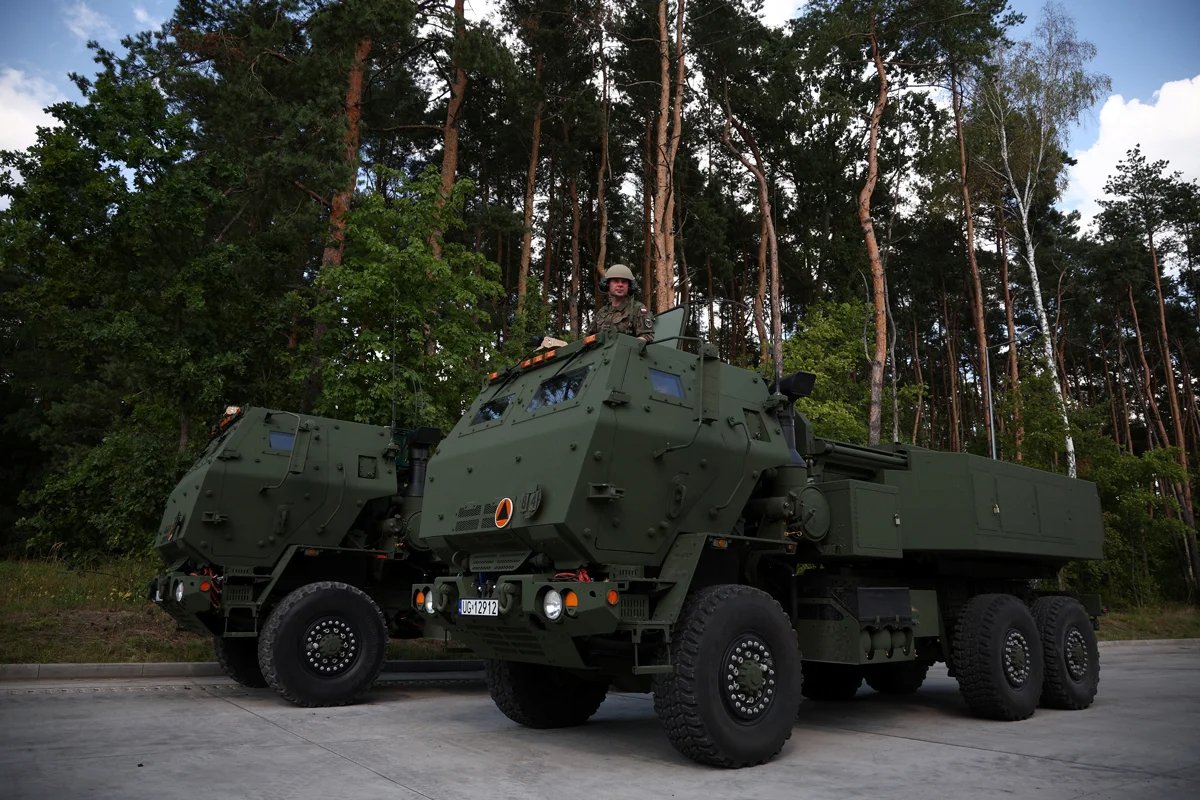
Polish soldier in a HIMARS rocket-launcher near Warsaw, 10 August 2023. Photo: Kacper Pempel / Reuters / Scanpix / LETA
Poland is now establishing long rows of reinforced concrete anti-tank equipment alongside bunkers, shelters, and radar systems along its border with Belarus and the Russian exclave of the Kaliningrad region. The areas are marked with signs in Russian stating: “Military zone, entry prohibited.”
The construction of the Eastern Shield fortification system, due to cost €2.25 billion, is set to be finished by 2028. Poland and the Baltic states have also announced their withdrawal from the Ottawa Treaty prohibiting the use of anti-personnel mines.
“Poles have a genetic sense of threat from Russia.”
European experts and politicians forecast that after the war in Ukraine ends, Russia would need three to eight years to recover and attack Europe. The Baltic states and Poland, with painful memories of Russian dominance still fresh, have been the first to anticipate and plan for such a threat.
According to the Stockholm International Peace Research Institute, Poland increased defence spending in 2022 by 75%, allocating $31.6 billion (€28.1 billion), and by 2024, spending increased to $35 billion (€31.1 billion). While it amounts to less than the defence spending of some richer and larger European countries, such as Germany and France, it is still an impressive feat for the Polish economy.
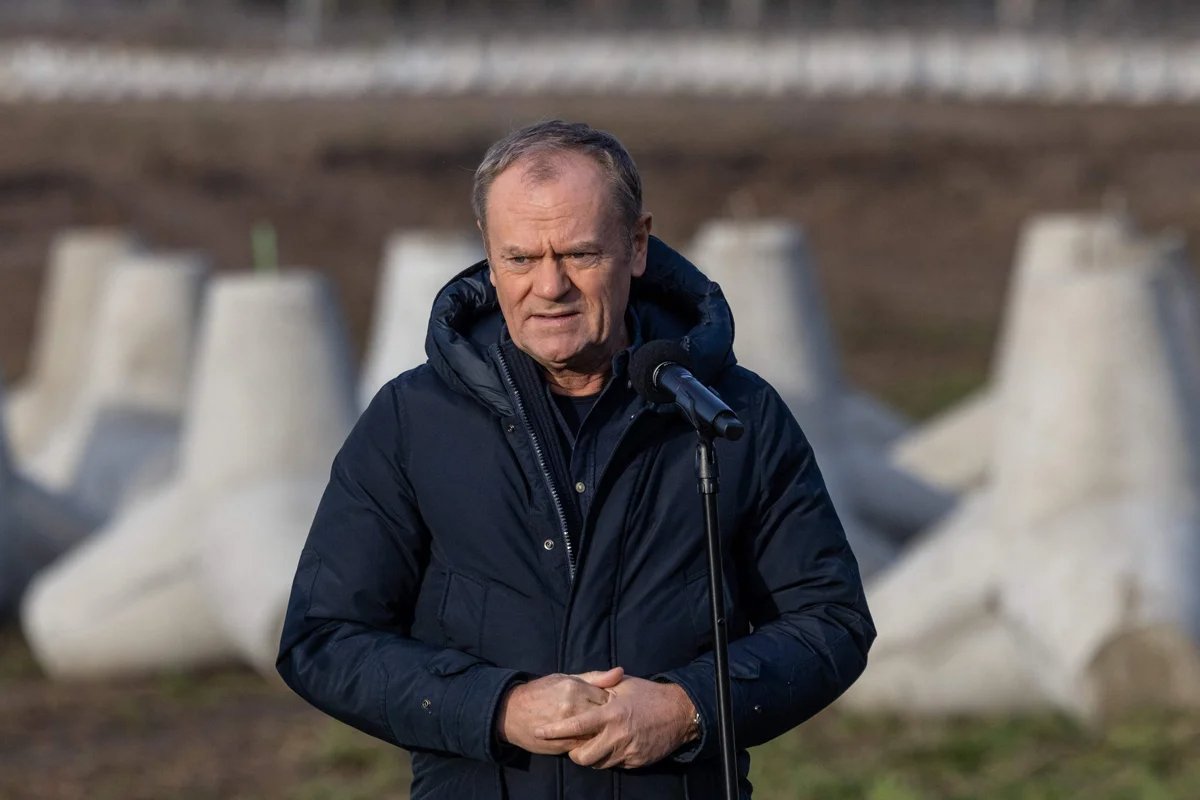
Polish PM Donald Tusk stands alongside concrete anti-tank barriers near the village of Dąbrówka Polska on the Polish-Russian border, 30 November 2024. Photo: Wojtek Radwanski / AFP / Scanpix / LETA
Poland buys the majority of its weapons from the US, notably signing a contract in September 2023 for the purchase of 486 US-made HIMARS rocket launcher systems, the delivery of which is set to start in late 2025. This contract would make Poland one of the largest HIMARS operators in the world: by comparison, Ukraine has only received 39 HIMARS systems from the US since the start of the full-scale invasion.
“We need to fill our stocks … as quickly as possible, because we still see that the threat of Russia is out there and … Russian politicians probably don’t want to end on Ukraine,” says Aleksandra Kozioł, an expert on European security at the Polish Institute of International Relations.
‘There’s no avoiding this’
Poland has the third largest armed forces in NATO, at over 216,000 military personnel, for a country with a population of almost 40 million. However, this number may still not be enough if a full-scale war is on the horizon — by comparison, the Armed Forces of Ukraine now number over 800,000, while Russia has 1.5 million servicemen.
In March, Polish Prime Minister Donald Tusk announced a plan to increase the number of Polish military personnel to 500,000 through special military training which will allow “every adult man in Poland” to acquire basic military skills.
According to Tusk, training will be voluntary and increase the number of reserves without resorting to the extremely unpopular policy of compulsory conscription, which was abolished in 2008.
The sense of security that Poland gained by joining NATO in 1999 appears to rapidly be disappearing.
While some Polish men may be hesitant to begin military training — since 2008, a generation of men have grown up in Poland without any knowledge of military affairs in general —- some have reacted enthusiastically to Tusk’s announcement.
“I think there really is a need for this in Poland. Poland’s geographical location and its history show that there’s no avoiding this,” says Karol Łuczka, a young man who works in the charity sector.
Polish-Russian history is at the forefront of many Poles’ opinions on the matter. “Poles have a genetic sense of threat from Russia,” says Michał Potocki, a 40-year-old journalist for a small Polish media outlet, in a cafe overlooking the Palace of Culture and Science, a Stalinist skyscraper in the centre of Warsaw.

Civilians undergo military training in Bydgoszcz, Poland, 26 April 2025. Photo: Kuba Stezycki / Reuters / Scanpix / LETA
Potocki’s great-grandfather fought in the Battle of Warsaw in 1920 and his family endured the partition of Poland between Nazi Germany and the Soviet Union in 1939. “Even in the 1990s, when Russia seemed to be going down a European path, my father said that the threat would return as soon as it recovered”, he recalls.
This is exactly what happened when Russia invaded Georgia in 2008, in Potocki’s view, leading Polish President Lech Kaczyński to utter the famous phrase: “We know perfectly well that today it is Georgia, tomorrow it will be Ukraine, the day after tomorrow are the Baltic states, and later perhaps, my country, Poland.”

Michał Potocki. Photo: Facebook
Potocki says that the feeling of a Russian threat grew in Poland in 2014 and 2022, and now that Donald Trump has been re-elected US President, this feeling has again peaked. The sense of security that Poland gained by joining NATO in 1999 appears to rapidly be disappearing.
When asked if he was willing to undertake military training himself, Potocki replied that he had considered taking such a course even before Tusk’s announcement, and had enquired about the cost because “Ukraine has shown how useful it could be”.
Common enemy or populism?
However, there is another point of view on what is happening in Poland. Krzysztof, 35, works in logistics. He was born and raised in Belarus, and only became a Polish citizen six months ago thanks to his Polish ancestry. He is now liable for military service, but he doesn’t take the prospect too seriously and thinks a Russian invasion is unlikely.
“People from the business world see what is happening completely differently,” Krzysztof says. “Everyone wants the politicians to reach a settlement more quickly, open the border and lift sanctions so that we can do business normally.”
But defence is now a much hotter issue in Poland than healthcare or education, which is why Tusk is placing it front and centre.
In his view, Polish politicians are pursuing their own interests by talking up the threat Russia represents. “It seems very overblown, especially ahead of elections, when they want to show the state really does think about the people so as to reassure the ones who are afraid. … I see a kind of populism in it,” he says.
Michał Pyzik, a queer person from Warsaw who identifies as non-binary, agrees. Just a couple of years ago, he was posting pictures of himself at Lenin’s Mausoleum on Red Square and Lake Baikal and Magadan in the Russian Far East and even contemplated living in Moscow. Pyzik says he never harboured any illusions about the Russian regime, though. Russia has been an aggressor for centuries and “always wanted more”, he says. “I was super surprised that the invasion didn’t happen sooner. I thought it would be straight after Crimea. Maybe the corona pandemic slowed things down.”

Michał Pyzik visits Lenin’s Mausoleum in Moscow. Photo: @konfucjana / Instagram
Like many Poles, Pyzik supports the idea of increasing defence spending. “Even deeply pacifist people like me understand that when you have Russia on one side, and the current US leadership on the other, it’s like 1939 all over again, between Germany and the Soviet Union. So active defence is a very rational idea,” he notes.
Yet Pyzik doesn’t believe an imminent Russian attack on an EU country is possible, and agrees with Krzysztof that politicians are actively exploiting the topic ahead of the presidential election, creating a “concept of a common enemy only they can protect us from”.
Between a rock and a hard place
Bartosz Wieliński, a political scientist and the deputy editor-in-chief of the Gazeta Wyborcza newspaper, says that politicians in the country cannot avoid the subject of military spending. “We can’t escape from reality, and reality is grim,” Wieliński says. The fact that even Donald Tusk, a pro-European politician, has taken up the cause of defence is a natural response to what is happening, he notes.
On the whole, ordinary people and the experts agree that the priority for Poland is to create an army that a potential aggressor will decide not to attack because fighting will be too costly.
When Tusk was the Prime Minister for the first time, “the liberal mainstream” were not talking too much about the army and defending the country, Wieliński recalls. But defence is now a much hotter issue in Poland than healthcare or education, which is why Tusk is placing it front and centre. “This is not … political play, propaganda. This is a very serious existential threat for Poland. And he responds to that,” he concludes.
When asked whether they are ready to join the army in the event of a Russian attack, the people Novaya Europe spoke to — even those who take the threat quite seriously — found it hard to answer.
Potocki admits that he often goes through the scenarios in his head, but doesn’t know what he’d do. “I know foreign languages, including Russian, and that could be useful to the military in difficult times. But I have no clear plan, just as many Ukrainians didn’t.”
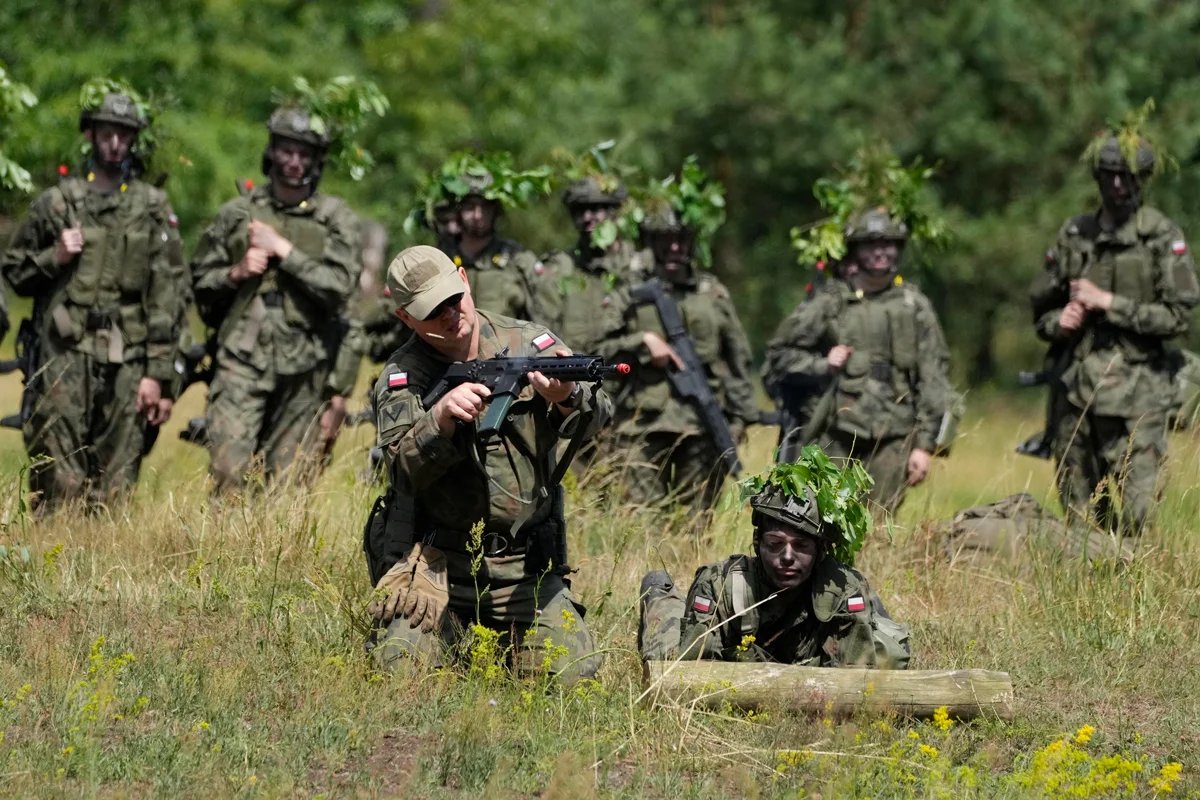
Polish volunteers undergo military training in Nowogród, Poland, 20 June 2024. Photo: Czarek Sokołowski / AP Photo / Scanpix / LETA
Łuczka takes a similar view: “I could say any number of things, but I don’t really know what I’ll do if the time comes. For now, I think that if none of my loved ones objected, and I didn’t have dependent children who needed to be taken to a safe place, then I would go and serve, yes. But that’s what I think now, in peacetime. I don’t know what my reaction would be in a time of stress.”
“If war breaks out and Russian tanks come to the borders of Poland, I’ll grab the cat, get in the car and say bye bye. I owe absolutely nothing to this country simply because I was born here,” Pyzik says adamantly.
Potocki thinks most of his compatriots are not ready for war, and that in this sense, they are close to other Europeans. He believes that “Poles have already passed the point of no return to a society where violence is accepted”. In the journalist’s circles, people talk of buying real estate in Spain and going there if there is a military threat.
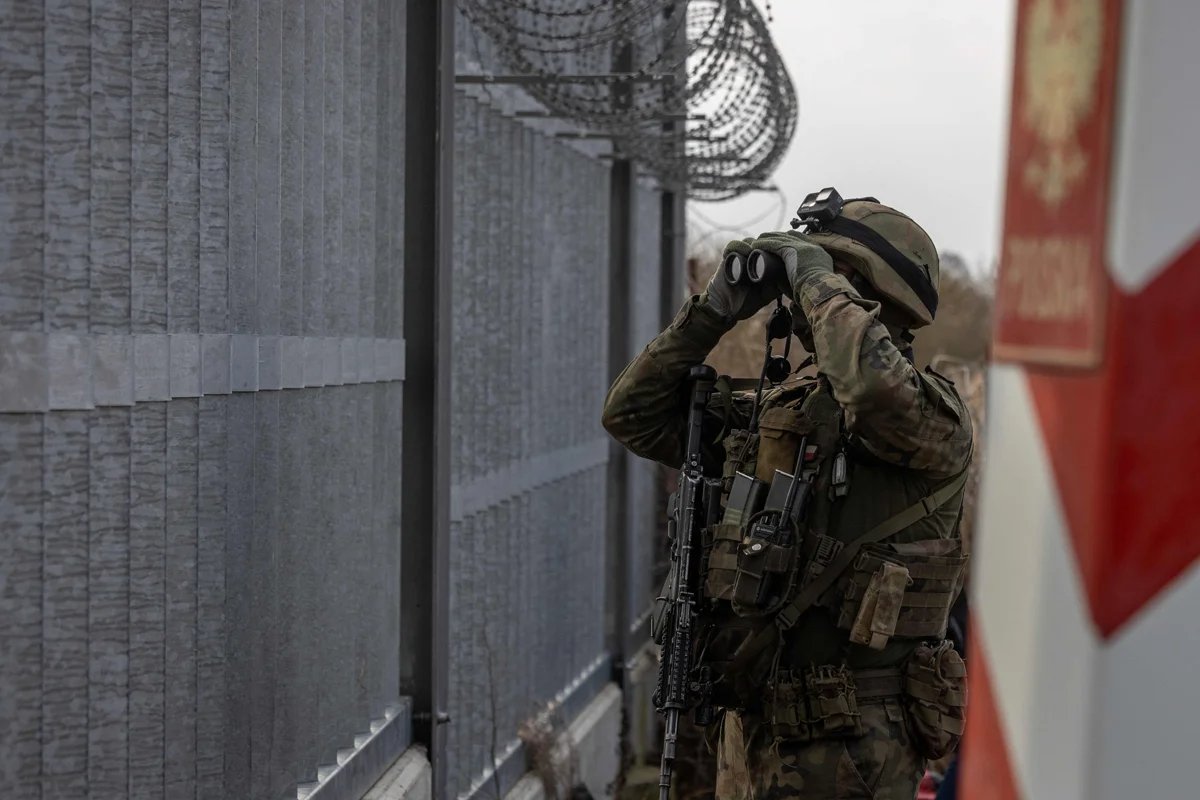
A Polish soldier patrols the border with Belarus, Ozierany Małe, Poland, 22 March 2025. Photo: Wojtek Radwanski / AFP / Scanpix / LETA
On the whole, ordinary people and the experts agree that the priority for Poland is to create an army that a potential aggressor will decide not to attack because fighting will be too costly. Potocki, however, says he finds it difficult to have faith in government plans, especially Warsaw’s intention of increasing Poland’s armed forces to half a million people.
The mood is also mixed in Hajnówka, on the Polish-Belarusian border, where work on a system of fortifications is already under way. Locals choose not to think that Russian tanks could pour into Poland any time soon from Belarus, with which they have close historical and cultural ties.
“What’s the point? If something really happens, I won’t be able to do anything,” says local man Radosław* (name changed). “To be honest, I don’t pay much attention. I don’t read or watch the news, because it’s all a political game. They need to have something to say and talk up the situation. I don’t want to get involved.”
Join us in rebuilding Novaya Gazeta Europe
The Russian government has banned independent media. We were forced to leave our country in order to keep doing our job, telling our readers about what is going on Russia, Ukraine and Europe.
We will continue fighting against warfare and dictatorship. We believe that freedom of speech is the most efficient antidote against tyranny. Support us financially to help us fight for peace and freedom.
By clicking the Support button, you agree to the processing of your personal data.
To cancel a regular donation, please write to [email protected]

